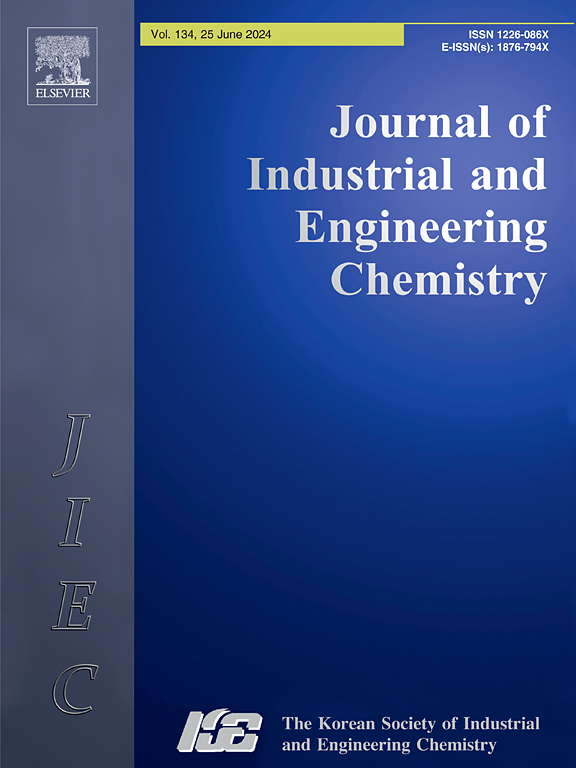Green synthesis of graphene-based derivatives from Ulva lactuca extract: Characterization and biomedical applications
IF 5.9
3区 工程技术
Q1 CHEMISTRY, MULTIDISCIPLINARY
Journal of Industrial and Engineering Chemistry
Pub Date : 2025-01-25
DOI:10.1016/j.jiec.2024.07.016
引用次数: 0
Abstract
Graphene-based materials have been extensively researched due to its biocompatibility, unique conjugated structure, and relatively low cost in the realm of biology. Graphene is increasingly being explored for many medical uses, including as DNA-hybridization devices, cancer treatment, and medicine administration. Furthermore, it exhibits substantial potential in several fields of biological applications, such as antibacterial interventions, therapy, and biosensing. The synthesis of GO and rGO was achieved in this work for the first-time using macroalgae, Ulva lactuca as a reducing agent. The antibacterial activity of graphene-based derivatives was evaluated against two different human pathogenic bacteria. Bacterial growth inhibition increased in proportion to the higher concentration. Higher concentration of nanosheets could enhance the cellular enzyme activity. Different scavenging assays are adapted to assess the antioxidant activity of GO and rGO. Significant in-vitro antioxidant activity was observed in a concentration-dependent manner. Furthermore, the antitumor activity of synthesized nanosheets was tested against human breast cancer cells (MCF-7) at various concentrations. The test results show that the graphene derivatives in the MCF-7 cell line exhibit an increase in apoptotic behaviour as sample concentration rises. This study could offer novel insights into the antibacterial, antioxidant, and anticancer activities of the green synthesized graphene-based derivatives.

从莼菜提取物中绿色合成石墨烯基衍生物:表征与生物医学应用
本文章由计算机程序翻译,如有差异,请以英文原文为准。
求助全文
约1分钟内获得全文
求助全文
来源期刊
CiteScore
10.40
自引率
6.60%
发文量
639
审稿时长
29 days
期刊介绍:
Journal of Industrial and Engineering Chemistry is published monthly in English by the Korean Society of Industrial and Engineering Chemistry. JIEC brings together multidisciplinary interests in one journal and is to disseminate information on all aspects of research and development in industrial and engineering chemistry. Contributions in the form of research articles, short communications, notes and reviews are considered for publication. The editors welcome original contributions that have not been and are not to be published elsewhere. Instruction to authors and a manuscript submissions form are printed at the end of each issue. Bulk reprints of individual articles can be ordered. This publication is partially supported by Korea Research Foundation and the Korean Federation of Science and Technology Societies.

 求助内容:
求助内容: 应助结果提醒方式:
应助结果提醒方式:


